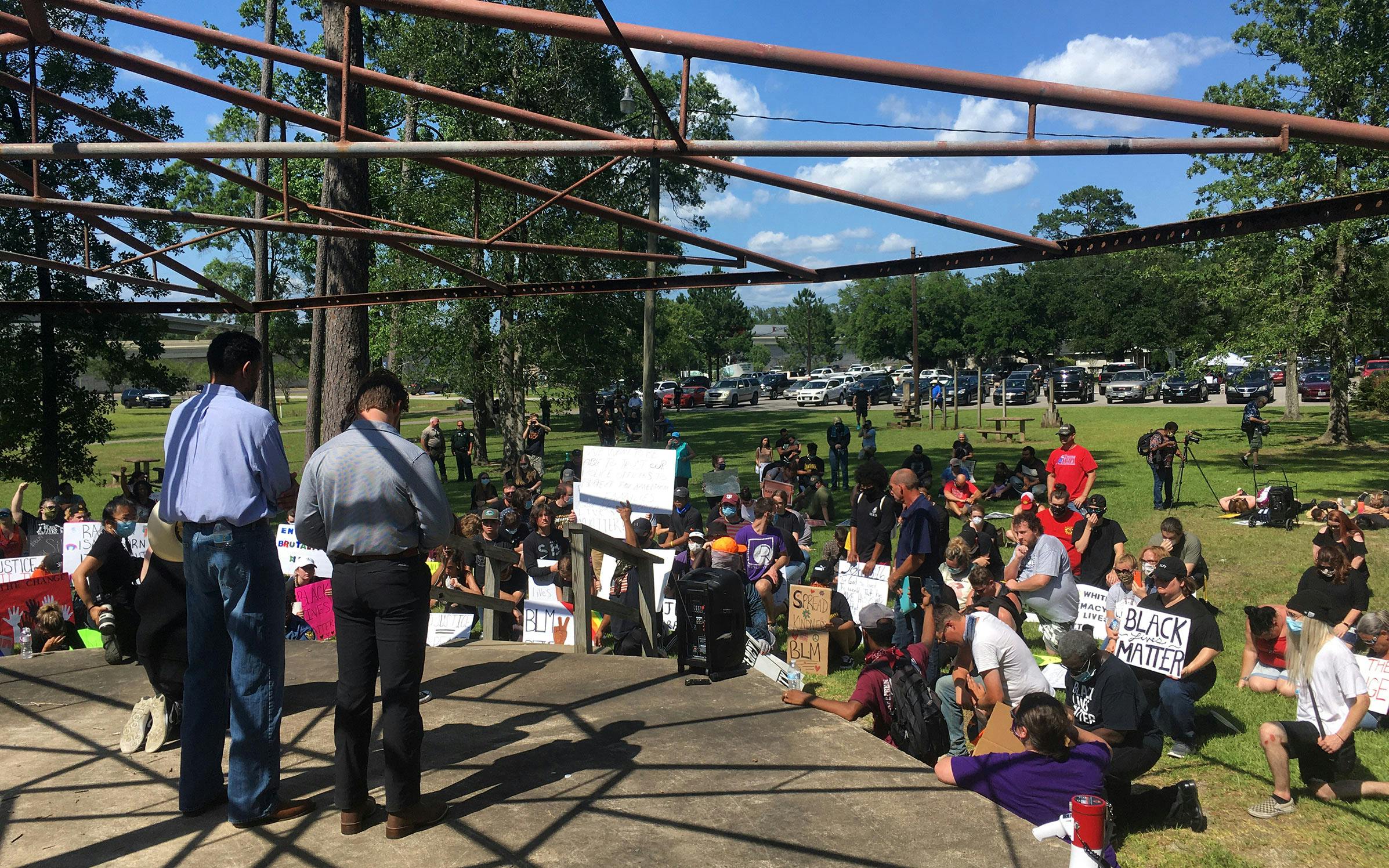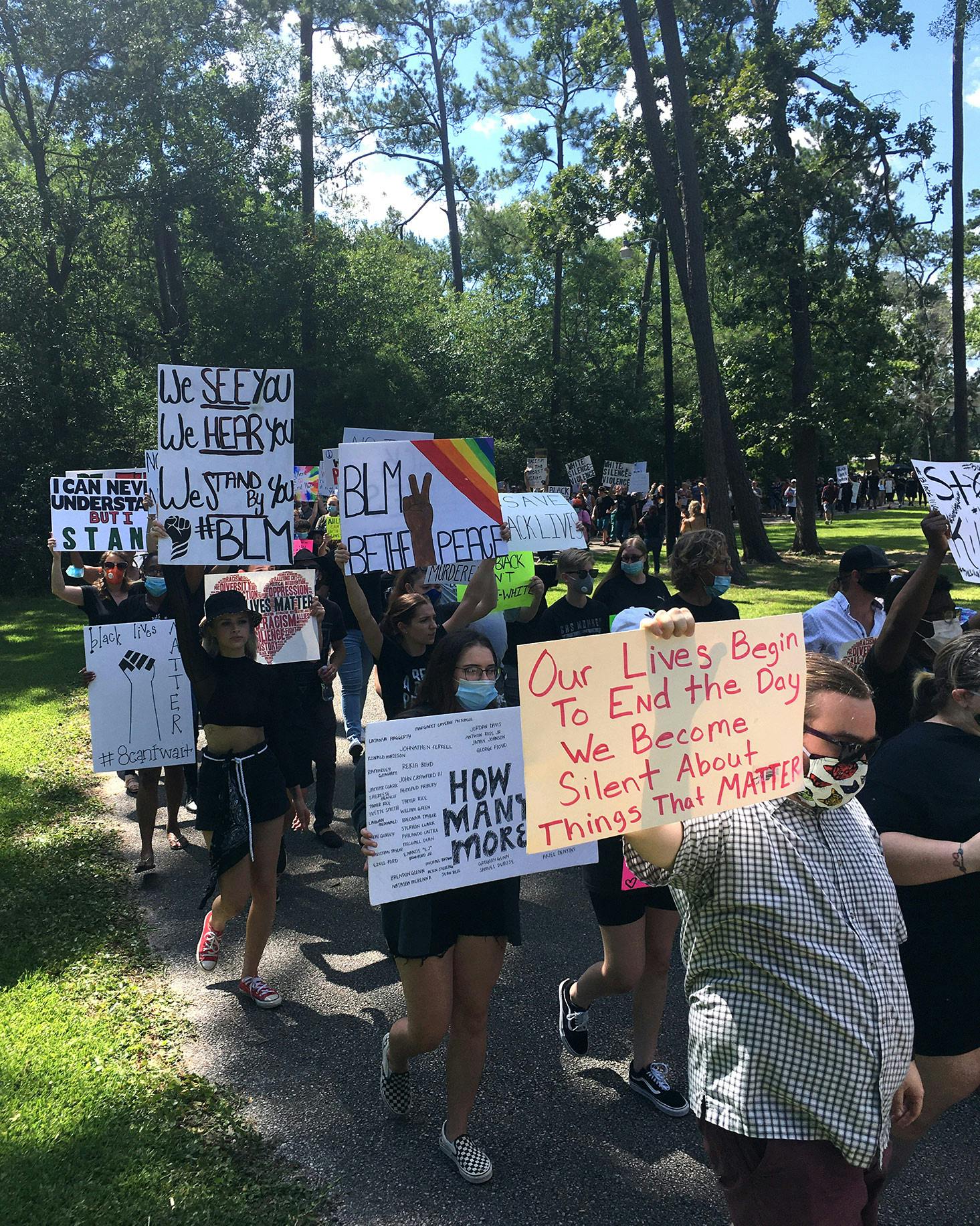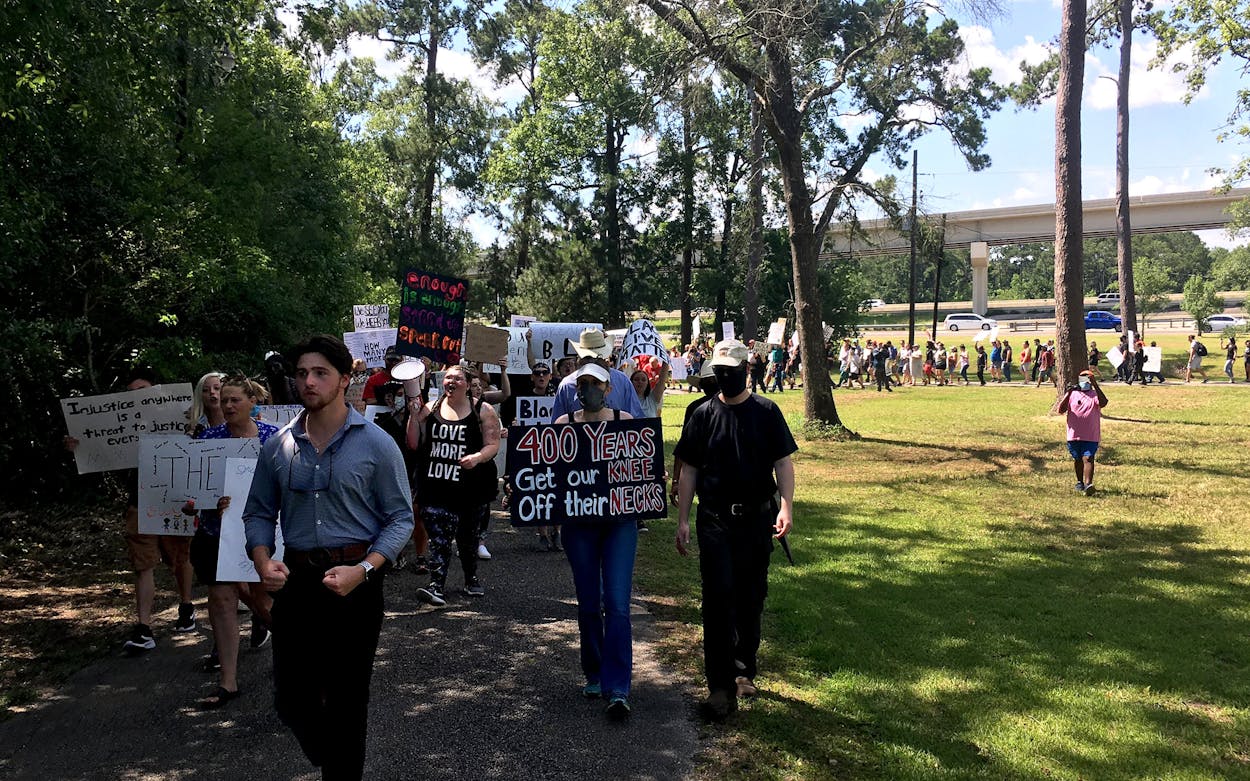“Vidor, Texas,” boomed the Reverend Michael Cooper, thin and tall in his cowboy hat, “will now be known for love!” The crowd, assembled at a dilapidated pavilion on the grounds of Vidor’s Raymond Gould Community Center, cheered. Vidor has been known for many things—among them the activities of the Ku Klux Klan in the nineties; its status as a “sundown town,” in which blacks were not allowed in city limits after dark; and an ugly fight in the early nineties over a federal effort to desegregate public housing in the city, which caused Texas Monthly, in a cover story that year, to describe Vidor as Texas’s “most hate-filled town.” The census estimates it to be 91 percent white.
So when word started to circulate that a Black Lives Matter rally was being planned in Vidor, many people on social media thought it was a trap—and expressed skepticism the event’s supposed planner, 23-year-old Maddy Malone, even existed. (She does.) To black folks with knowledge of the region, who had been told never to stop in Vidor, the idea seemed insane. “A civil rights rally in Vidor” is the punch line to a joke, not a thing that could happen in this world. C’mon.
Yet on Saturday, there they were, some 150 to 200 people standing in the sun, in the draining humidity and heat of Southeast Texas, “to come together in love and unity and to bind together under God,” as Malone told the crowd. “My generation is reaching to break the cycle.” They heard from a number of speakers, including Cooper, who is the head of the Beaumont chapter of the NAACP, but also young Vidorians like Malone.

Perhaps the most impressive thing about the Vidor rally was the demographic mix of attendees. There were a good number of African American marchers, but the crowd was predominantly white. Many were young people in their teens and twenties, like Malone. But there were also middle-aged white women with homemade T-shirts and hats bearing slogans like “I can’t breathe” handing out chilled water and snack packs. A white mother bore a sign that said she had been “radicalized” by Floyd’s calls for his mama as he was losing consciousness. After the event, a well-built white man with an American flag and an airborne infantry pin on his baseball cap came up to thank Malone for putting the event together. There was a guy in a Pittsburgh Steelers jersey. (There’s always a guy in a Steelers jersey.)
Cooper, the most experienced speaker, paced the pavilion as he spoke. “We need to make sure that we are the generation of change. You may be seventy-five and you grew up a certain kind of way, but change is here at twenty-three,” he said, pointing to Malone. “I’m fifty-four. I was a part of the problem. Now I want to be part of the solution.”
The event was billed as a “peace march,” but there wasn’t really a place to march to, the park being penned in by Interstate 10. So instead the crowd marched on the circular sidewalk around the pavilion, doing laps and chanting. An activist from Houston led them on a megaphone as they walked. “Justice for,” he said, with the crowd chanting back, “George Floyd.” After probably half a mile the crowd returned to the pavilion.
After the crowd had worked up a sweat, Mitchell, a history major at Texas A&M University, took to the mic with a wad of folded papers, from which he read off a “brief” list of events in the history of American race relations, from the Compromise of 1877, which ended Reconstruction, to the retirement of Strom Thurmond. He marveled at the fact that the last Dixiecrat had remained in power until 2003, the year he was born. “Further research will be able to show you the damage that systemic racism has done to the African American community,” he concluded. “We must be not only not racist but anti-racist.”
Malone passed the mic to her friend Devon Noe. “Some of you might know me as Vidor’s resident gay black guy. Yeah, that’s me,” Noe said. “Yes, there is racism in Vidor, but there is good people. Like Ariel,” he said, pointing to a young white woman in the front row whom he said had helped him survive high school. “I love you,” Ariel replied. Noe said, “I’ve had to deal with a lot. I’ve had bottles thrown at my head while walking through town. I’ve had people jump the curb to attempt to hit me with their vehicles. Still, I know Vidor is a very damn good place. I hate the fact that the media paints a picture of us from fifty years ago, but there are good people here.”

Toward the end of the rally, the crowd kneeled in the baking sun for 8 minutes and 46 seconds—the amount of time Officer Derek Chauvin’s knee was on Floyd’s neck. Black volunteers stationed around the crowd read from the transcript of the video—Floyd’s pleas as his life ended, and the pleading of bystanders. Cooper asked the crowd to wallow in the silence as the pleading stopped and to feel the expanse of time during which Chauvin had refused to let up.
When we spoke, Malone was visibly emotional. “I’ve lived here my whole life, and . . .” she trailed off, choking up. “I can’t even express it.” She was interrupted by a friend from Vidor. “This is one of the best experiences of my life. For real,” Malone’s friend said, hugging her.
Another friend, Yalakesen Baaheth, who stood with Malone onstage, came by. “I couldn’t have done this without her,” Malone said. “We couldn’t have done this without each other,” Baaheth said. She grew up in nearby Beaumont, she said, and her family wouldn’t stop in Vidor. They knew better. And now she was here.
Many of those skeptical about the rally worried about the Vidor police. But if anything, the police presence was light, serving primarily to ensure that the rally was kept separate from what seemed like the real threat: a small group of counterprotesters who staged themselves at the entrance to the park’s parking lot, where they would be seen by all who entered. They hung a banner that read “Vidor Only Kneels to God!” Quite a few of them carried rifles and shotguns.
They were joined in their watchfulness by another group, who periodically entered and then circled the parking lot in pickups, some displaying the Confederate flag. They’d group up—sometimes speaking to one another through rolled-down windows—and then disperse or leave.
Only one driver went further. About fifteen minutes into the rally, a beat-up pickup with a missing bumper and no fewer than five different Confederate flag stickers swung into the parking lot, stopping crooked. An older man stepped out of the truck, smelling of cigarettes, and approached a middle-aged woman who was wearing pink sneakers and sunglasses. It sounded as if he challenged her to explain why she was there—and what she thought of the signs that say “Black Lives Matter.”
“All lives matter, but these people have been through a lot more than you have,” she replied. He shouted: “All these signs, these signs are racist.” A man with a ponytail nearby calmly told him to “go home, man.” The cigarette-smoking man shot back: “I am!” And with that, he walked back to his truck and departed as quickly as he had come. For a moment, at least, hate was on the run.
- More About:
- Politics & Policy
- Black Lives Matter








